 Multiple Choice Questions
Multiple Choice QuestionsIf temperature of an object is 140°F, then its temperature in centrigrade is
105°C
32°C
140°C
60°C
A body of specific heat 0.2 kcal/kg°C is heated through 100°C. The percentage increase in its mass is
9 %
9.3 x 10-11 %
10 %
None of these
An oxide coated filament is useful in vacuum tubes because essentially
it has high melting point
it can without and high temperature
it has good mechanical strength
it can emit electrons of relatively lower temperature
Mass of 1 mol of air is 29 x 10-3 kg. The speed of sound at STP will be nearly
332.5 m/s
340 m/s
320 m/s
325 m/s
The length of a steel rod is 5 cm longer than that of a brass rod. If this difference in their lengths is to remain the same at all temperatures, then the length of brass rod will be (coefficient of linear expansion for steel and brass are 12 x 10-6 /°C and 1.8 × 10-6 /°C
20 cm
15 cm
5 cm
10 cm
The temperature of the two outer surfaces of a composite slab, consisting of two materials having coefficients of thermal conductivity K and 2K and thickness x and 4x, respectively are T2 and T1 (T2 > T1) . The rate of flow of heat through the slab in steady state is
B.

Let T be the temperature of the interface in the steady state, the rate of flow of heat through the two slabs will be equal i.e.,
One mole of oxygen is heated at a constant pressure from 0°C. What must be the quantity of heat that should be supplied to the gas for the volume to be doubled . (specific heat of oxygen is 0.218 calg-1K-1)
1700 cal
1805 cal
1904 cal
1612 cal
Two bodies A and B, have thermal emissivities of 0.01 and 0.81 respectively. The outer surface areas of both the bodies are same and emit the same radiated power. The wavelength λB , corresponding to the maximum intensity in radiation from B, is shifted from the wavelength λA , corresponding to the maximum intensity in radiation from A, by 1 µm. If the temperature of A is 5802 k, then the temperature and wavelength λB of body B are
1934 K, 3.5 µm
1934 K, 1.5 µm
1728 K, 32 µm
1764 K, 1.8 µm
